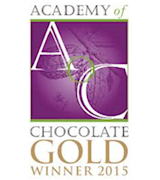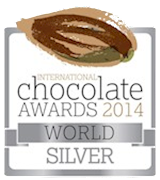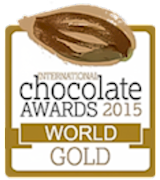TABLE OF CONTENTS
Best Kansai Foods
Shabu-shabu is a popular Japanese dish consisting of thinly sliced meat and vegetables cooked in water. The dish is an evolved version of the traditional Mongolian nabemono (one-pot) cooking. Roughly translated to swish-swish, its name is referring to the sound that is made when the sliced pieces of meat go through the water.
Although beef is the most popular choice of meat, shabu-shabu can also be prepared with lamb, chicken, pork, duck, crab, or lobster. Steamed rice and a variety of sauces are often served on the side, accompanying the main dish. The dish is typically shared and eaten communally, each consumer dipping a slice of meat in the central pot that is filled with boiling water.
OTHER VARIATIONS OF Nimono
MOST ICONIC Shabu-shabu
View moreMAIN INGREDIENTS
Futomaki is a variety of rolled sushi that is characterized by its large size and a strict balance of used ingredients. The rolls are typically filled with vegetables of different colors, and usually don't contain seafood. Futomaki should be both flavorful and visually appealing, and the ingredients are chosen by how well they accompany each other in terms of visual appeal and flavor.
The name of the dish is Japanese for fat roll, the rolls usually being 4 centimeters in diameter and larger, consisting of three components: nori seaweed, which is the outer layer, sushi rice, and selected fillings such as cucumbers, carrots, and mushrooms.
OTHER VARIATIONS OF Sushi
The small, round takoyaki are one of the most famous Japanese snacks, made with a simple egg batter that is enriched with diced octopus pieces. These tiny balls get their signature shape from the traditional iron pan in which they are grilled. The pan is filled with small round molds in which the batter is poured and swirled until the traditional round shape has been developed.
The creamy egg mix consists of wheat flour, soy sauce, and dashi stock, and after it has been poured into the sizzling molds it is topped with tender octopus pieces. Sliced scallions, pickled ginger, crispy fried tenkasu pieces, and dried fish flakes are often incorporated to elevate the flavors of the dish.
MOST ICONIC Takoyaki
View moreMAIN INGREDIENTS
Kitsune udon is a famous Japanese dish which consists of thick udon noodles served in a fragrant dashi broth which is then topped with sliced or whole deep-fried tofu known as aburaage. The name of the dish is translated as fox udon, following the old folk tale which suggests that foxes are great admirers of deep-fried aburaage.
Even though the origin of this dish is vague, it is believed that it originated in the 19th-century Osaka, from where it spread throughout Japan and became one of the most common dishes served in traditional Japanese udon restaurants.
OTHER VARIATIONS OF Udon
Mitarashi dango is a popular Japanese treat which consists of skewered rice cakes covered in a sweet, sticky soy sauce glaze. They are traditionally made with five round cakes, just like they were initially prepared at the Kamo Mitarashi Tea House in Kyoto.
It is believed the name mitarashi stems from their similarity to water bubbles found in the water basins at the entrances of Shinto shrines. Today they are popular throughout the country, readily available at convenience stores and specialized dango shops.
OTHER VARIATIONS OF Wagashi
Okonomiyaki is a traditional dish that consists of batter and shredded cabbage. Two main variations come from Osaka (also called Kansai-style) and Hiroshima. The Osaka-style okonomiyaki is prepared by mixing the ingredients together – including grated yam, flour, eggs, water or dashi, and shredded cabbage – and pouring the batter on a hot griddle just like a pancake.
Additional toppings and ingredients are all mixed into the batter, such as seafood, meat, and scallions, unlike the Hiroshima-style okonomiyaki, which is layered and the ingredients are cooked separately. Once cooked, the dish is topped with a special sweet and sour okonomi sauce, and usually Japanese mayonnaise and bonito flakes.
OTHER VARIATIONS OF Okonomiyaki
Breaded, skewered with a bamboo stick and deep-fried, the delectable bite-sized pieces of various fish and seafood, pork, chicken, beef, and even horse meat or fresh vegetables are collectively called kushiage, also kushikatsu, and originate from Osaka, a city aptly nicknamed the kitchen of Japan.
Kushiage first appeared in the 1920s in Shinsekai, but today, these incredibly popular fried skewers can be enjoyed anywhere from numerous street food stands to kushiage-specialized restaurants that offer a truly unique Japanese dining experience.
And while the street snack version of kushiage is simply served with a Worcestershire-like brown sauce which comes in a communal pot, the gourmet kushiage prepared at high-end Asian fusion restaurants is amazingly creative and sophisticated.
OTHER VARIATIONS OF Agemono
MAIN INGREDIENTS
Hayashi rice or hashed beef rice is a Japanese dish consisting of a beef stew with a demi-glace base that is poured over steamed rice. It is a western-style Japanese dish that has been popular since the early 1900s. Although hayashi rice is a popular dish to cook at home, it is also commonly found on the menus of western-style restaurants.
It is still unknown where the name hayashi comes from, but some claim that a chef named Hayashi first prepared the dish as a meal for the employees of his restaurant. However, other people claim that it comes from the mispronunciation of the English phrase hashed beef.
MAIN INGREDIENTS
Nishin soba is a traditional dish made with soba noodles. In order to prepare it, herring is served over buckwheat soba noodles in a hot tsuyu broth. The ingredients include soba noodles, herring filets, shiitake mushrooms, sake, sugar, mirin, soy sauce, and dashi.
The noodles are placed into bowls, followed by the tsuyu broth, and the dish is then topped with the fish and shiitake mushrooms. Depending on the weather or season, people eat their local specialty noodles hot (when it’s cold outside) or cold (when it’s hot outside).
OTHER VARIATIONS OF Soba
MAIN INGREDIENTS
Wakayama ramen is often described as a Tokyo-style ramen served in Tokushima broth. In Wakayama, it is usually referred to as chuka-soba (Chinese noodles). The noodles in Wakayama ramen are thin and straight, while the soup can either be clear and soy sauce-flavored (shako-mae style) or it can consist of a combination of tonkotsu base and soy sauce.
Pork ribs are one of the most common additional ingredients in Wakayama ramen, and the dish is typically served with a boiled, runny-yolk egg instead of a raw one that is served with Tokushima ramen. Interestingly, Wakayama ramen is often served with sushi on the side, and when it’s time to pay, customers will tell the staff how many of these side dishes they’d consumed.
OTHER VARIATIONS OF Ramen
MOST ICONIC Wakayama ramen
View moreTABLE OF CONTENTS
Best Kansai Food Producers
Marukyu Koyamaen is a prestigious tea company based in Uji, Kyoto, Japan, specializing in premium green teas, particularly Gyokuro and Matcha. Founded in 1917, it has a long history of producing high-quality teas using traditional Japanese methods.
The company prides itself on its commitment to preserving the rich heritage of Japanese tea culture while delivering exceptional products that embody the essence of Japanese craftsmanship. Marukyu Koyamaen also offers a variety of tea-related products and services, including factory tours and special offerings for food-grade matcha.
Their teas are highly regarded for their rich flavor, aroma, and smoothness, making them a favorite among tea enthusiasts worldwide.
AWARDS

The Leafies Awards - Gold
2022
BEST Marukyu Koyamaen Teas and Herbal Infusions
AWARDS

International Chocolate Awards - Gold
2017, 2016, 2015, 2014, 2013

Academy of Chocolate - Gold
2016

International Chocolate Awards - Silver
2017, 2016, 2015, 2014, 2013
AWARDS

NYWSC - New York World Spirits Competition - Double Gold
2023

SFWSC - San Francisco World Spirits Competition - Double Gold
2023

The Asian Spirits Masters - Gold
2022
BEST The Kyoto Distillery Spirits
AWARDS

SFWSC - San Francisco World Spirits Competition - Double Gold
2024
BEST The CHOYA Liqueurs
AWARDS

USC- Ultimate Spirits Challenge - Chairman's Trophy
2023

USC- Ultimate Spirits Challenge - Top 100
2023
BEST AWAYUKI Spirits
AWARDS

ISC-International Spirits Challenge - Double Gold
2023

IWSC- International wine & spirit competition - Spirit Gold
2024
BEST Takara Shuzo Co., Ltd Spirits
AWARDS

SFWSC - San Francisco World Spirits Competition - Double Gold
2023
BEST Choya Umeshu Liqueurs
TABLE OF CONTENTS
Best Kansai Food Products
The product Black Shichimi Pepper & Chinese Milk Vetch Honey is crafted by es koyama, a renowned Japanese confectionery brand. This unique product blends the complex flavors of black shichimi pepper, a Japanese spice mix known for its depth and heat, with the natural sweetness of Chinese milk vetch honey.
The honey is noted for its floral undertones and smooth texture, which complement the spiciness of the pepper. This combination creates a harmonious balance of sweet and spicy, making it a distinctive and gourmet addition to culinary dishes or as a standalone delicacy.
AWARDS

Academy of Chocolate - Gold
2016

International Chocolate Awards - Gold
2015
The product Kinmokusei (Fragrant Olive) & Chanchamayo 63% is crafted by es koyama, a renowned confectionery brand known for its meticulous attention to detail and high-quality ingredients. Kinmokusei, also known as fragrant olive, is a flower revered for its subtle, enchanting scent that often finds its way into various culinary applications.
Chanchamayo 63% likely refers to the cacao content sourced from the Chanchamayo region, which is known for producing deeply aromatic and flavorful cacao beans. This combination hints at a chocolate product that is both aromatic and rich in flavor, tailored for a sophisticated palate.
AWARDS

Academy of Chocolate - Gold
2016

International Chocolate Awards - Gold
2016
Daitokuji-Temple Natto made by es koyama is a specialty food product that originates from Japan. This delicacy is a fermented soybean product, notable for its strong flavor and distinctive aroma. It is often paired with rice and various condiments to enhance its taste.
The natto is named after the Daitokuji Temple, which has historical significance in Japanese culture. This product is carefully crafted to maintain its traditional roots while appealing to modern palates.
AWARDS

International Chocolate Awards - Gold
2015, 2013
AWARDS

IWSC- International wine & spirit competition - Spirit Gold Outstanding
2022

IWSC- International wine & spirit competition - Whiskey Gold Trophy
2022
AWARDS

NYWSC - New York World Spirits Competition - Double Gold
2023

SFWSC - San Francisco World Spirits Competition - Double Gold
2023
AWARDS

USC- Ultimate Spirits Challenge - Chairman's Trophy
2023

USC- Ultimate Spirits Challenge - Top 100
2023
Grappa (Bric del Gaian Grappa di Moscato d'Asti) is a distilled spirit made from the pomace of Moscato d'Asti grapes. This type of Grappa is known for its aromatic intensity and rich flavors, reflecting the characteristic sweetness and floral notes of the Moscato grape.
It is typically enjoyed as a digestif, often served in a tulip-shaped glass to concentrate and enhance its complex bouquet.
AWARDS

Academy of Chocolate - Gold
2016
Smokey (Laphroaig 10 Year Old & Raspberry) by es koyama is a gourmet confectionery product that showcases the genius of renowned Japanese pastry chef Susumu Koyama. This unique creation pairs the intense, peaty flavors of Laphroaig 10 Year Old Scotch whisky with the bright, tart notes of raspberry to create a sophisticated and harmonious taste experience.
The combination highlights the complexity of the whisky while balancing it with the fruitiness of the raspberry, appealing to both whisky enthusiasts and dessert lovers.
AWARDS

Academy of Chocolate - Gold
2016
AWARDS

Academy of Chocolate - Gold
2016
Coffee&Coffee Flower Honey is a distinctive product created by the renowned Japanese patissier, es koyama. This unique honey is harvested from the blossoms of coffee plants, resulting in a rich, aromatic flavor that seamlessly blends the nuances of coffee and floral sweetness.
The artisanal approach ensures a high-quality product, often enjoyed as a condiment or a sweetener that enhances a variety of culinary creations.
AWARDS

Academy of Chocolate - Gold
2016
TasteAtlas food rankings are based on the ratings of the TasteAtlas audience, with a series of mechanisms that recognize real users and that ignore bot, nationalist or local patriotic ratings, and give additional value to the ratings of users that the system recognizes as knowledgeable. For the “Top 100 Kansai Foods” list until April 06, 2025, 1,568 ratings were recorded, of which 1,325 were recognized by the system as legitimate. TasteAtlas Rankings should not be seen as the final global conclusion about food. Their purpose is to promote excellent local foods, instill pride in traditional dishes, and arouse curiosity about dishes you haven’t tried.






















































































